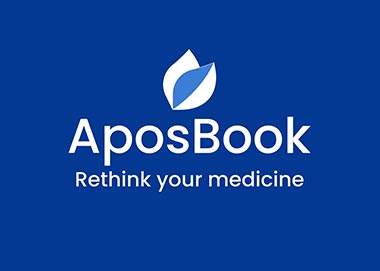This study suggests that there was a lack of clinical evidence to support the use of collagen for weight loss in obesity, gut health and in fibromyalgia.
Collagen: A Review of Clinical Use and Efficacy
July 2021
By Chloe Steele
Abstract
Orally administered collagen in its many different forms is recognised as a highly biocompatible, safe form of supplementation, which has the potential to act on the body as an anti-inflammatory and antioxidant, and through structural remodelling and reduced lipotoxicity. The aim of this systematic review was to determine diseases where collagen has been indicated; assess safety, bioavailability and efficacy; and to provide therapeutic recommendations. It was concluded that collagen supplementation is strongly indicated for its positive therapeutic effect on pain management of osteoarthritis, balancing blood sugars in type II diabetes, wound healing, skin ageing, and post-exercise body composition and strength. Promising results were also seen for the use of collagen supplementation in osteoporosis, hypertension, rheumatoid arthritis, tendinopathy, cellulite, atopic dermatitis, sarcopenia and brittle nail syndrome.
Although therapeutic recommendations were indicated in most of these diseases, owing in the large part to the use of these supplements as part of dual therapy or the uncertainty over translatability of branded products it was concluded that more studies are required to make definitive recommendations. There was a lack of clinical evidence to support the use of collagen for weight loss in obesity, gut health and in fibromyalgia.
Introduction
Collagen is the major constituent of connective and conjunctive tissues in the body, and is the most abundant protein in the human body.1 Twenty-eight different types of collagen have been found, and each is unique in its distribution, structure and function throughout the body. Identified using roman nomenclature, collagen type I is the main constituent of bone, skin, teeth, tendons, ligaments, vascular ligature and organs; type II is found in the cartilage; and type III is found in the skin, muscle and blood vessels. The remaining types have various functions throughout the body.
Orally administered collagen peptides (CPs) in supplements or food have been demonstrated to reach the bloodstream and tissues, indicating the potential for collagen to influence the body from within. Supplement types differ depending on the parent tissue and the extraction technique performed. Derived from gelatin, a mixture of thermal treatment and enzymatic hydrolysis results in collagen hydrolysate (CH) or specific collagen peptides (SCPs), further purification of which can result in collagen tripeptide (CTP) or octapeptide, all of which mainly contain types I and III and occasionally type II collagen. Unhydrolysed or undenatured collagen usually contains type II.
Supplemental collagen is traditionally bovine, porcine or ovine sourced, but marine and synthetic vegan-derived products are now more common due to increased social and religious acceptance, and heightened awareness of recent health worries related to bovine spongiform encephalopathy and foot-and-mouth disease.
The aim of this systematic review was to determine the disease areas where collagen has been indicated, and review the human clinical literature on safety, bioavailability and efficacy with a view to making specific therapy recommendations. Although topical formulations exist, this white paper focuses on orally supplemented collagen, and unless stated otherwise constitutes the research reviewed. Many forms of collagen supplement were included in this review, including CH, unhydrolysed collagen-type II (UC-II), CTP, octapeptide and SCPs.
Bioavailability
Although it is thought that orally ingested collagen is hydrolysed in the intestinal tract prior to absorption,9 native collagen and gelatin may not be efficiently absorbed compared with lower molecular weight forms that are often found in supplements,12 and there is evidence that differing forms may have differing post-prandial absorption rates, bioavailability and bioactivity.
One randomised-controlled trial (RCT) of 10 healthy males reported higher absorption rates and bioavailability of several bioactive amino acids in orally administered CH compared with non-hydrolysed collagen.13 Furthermore, CTPs containing differing amounts of the bioactive peptides glycylprolylhydroxyproline (GLY-PRO-HYP) and prolylhydroxyproline (PRO-HYP) were reported to be effectively absorbed within 1 hour in 12 human subjects, only when in the tripeptide form.14 Dose-dependent excretion of the tripeptide and dipeptide forms was also observed, indicating relative stability within the body. This is in contrast to one study that reported no differences between the bioavailability of CH and its unhydrolysed form.15 This study did acknowledge that processing methods may account for differences with other research, as differing processing techniques can influence digestibility.16
The form of CH may also dictate absorption by differing tissues within the body, indicating that unique peptide configurations may have implications for certain diseases. One animal study of CH reported absorption within 12 hours, and a higher degree of detection in cartilage if in its higher molecular weight form compared with lower molecular weight forms, indicating better bioavailability,2 which could have potential implications for cartilage-related conditions, such as osteoarthritis (OA).
Marine collagen sources have also been reported to have differing biological properties than the more commonly used land animal collagen, owing to the temperature and salinity of the water where they originate.17,18
These studies indicate that differing forms of collagen may have specific actions and efficacy within the body, and that results may not be generalisable when certain forms, brands or types of collagen are used in clinical trials.
Food sources
Vegan collagen
Collagen is a part of all animal tissues, so animal-based foods would appear to be the best sources; however, plant-based collagen products have increased on the market. Vegan collagen products are extensive in their formulations, and mainly focus around stimulating collagen production rather than supplying the original form.
In vitro studies have shown that aloe sterol, which is a plant-derived sterol resembling animal cholesterol, and andiroba oil may have the ability to stimulate collagen production; however, collagen type was not specified.19,20 Clinical research on aloe sterol focused around skin health.20,21 One in vitro study in human fibroblasts treated with aloe sterols showed increased collagen production compared with control.21 The type of collagen produced was not specified; however, it was reported that expression of two key enzymes, COL1A1 and COL3A1, which are responsible for collagen production, was increased. In the same study, a double-blind placebo-controlled trial consisted of 56 women with dry skin who were supplemented with five tablets of aloe vera gel powder per day for 8 weeks (dosage not disclosed). No differences in skin hydration were observed between the two groups; however, skin wrinkling was improved in those supplemented, and it worsened in those on placebo, but differences were not significant. A sub-analysis of subjects ≥ 40 years old showed significantly improved skin wrinkling with supplementation compared with placebo, indicating that aloe sterol may promote synthesis in those when collagen production is reduced.
Panax ginseng extract has also been shown to promote collagen synthesis in human dermal fibroblasts; however, as with aloe sterol, the type of collagen was not specified.22 In vitro studies have shown inhibited collagen type II degradation in osteoarthritic osteocytes following application of panax ginseng saponins.23 Increased collagen type I in NIH/3T3 cells, which have a potential role in wound healing,24 and diabetic fibroblasts25 has also been reported, indicating a potential for use in several different diseases. Although there is potential for panax ginseng to promote collagen I production and prevent collagen II degradation, data in humans and clinical outcomes were not evident.
Further studies in Centella asiatica, a medicinal plant known as Gotu Kola, have also indicated that collagen production may be stimulated in human skin fibroblasts when in combination with other vitamins.26 However, clinical trials in humans are lacking.
Most companies focus on boosting collagen production as previously discussed, but genetically engineering yeast to produce collagen is also possible.27 Collagen type I, type II28 and type III29 have all been produced using this method. Type I collagen was also produced in one in vitro study, which had a structure indistinguishable from animal-derived gelatin,30 but there was no evidence of its clinical use. The existence of vegan collagen on the market is very rare, but one notable form that is in production is PrimaColl™, a type 21 collagen, which is branded as the world’s first true vegan collagen.31 However, clinical trials are still in progress.
Collagen boosters make up the majority of the vegan collagen research. Although two studies were evident on supplementation of vegan collagen boosters in skin health, its application in other disease areas is lacking. As these studies are concerning collagen boosters, results from animal collagen may not be generalisable and applied to vegan collagen. No comparisons with animal-derived collagen were evident in the literature and, as products vary enormously among the industry, comparisons are difficult.
Animal-derived collagen
In recent years, bone broth as a functional food has seen a resurgence in popularity and, although it may contain nutrients that have health benefits, differences in preparation and source could result in variation in absorption rate, amino acid content, and bioavailable and bioactive peptide chains. One quantitative study of several different bone broth preparations reported lower levels of the amino acid precursors for collagen production in the commercially prepared varieties than supplemented CH powders and liquids, and home-prepared varieties and those from cafes had the highest amounts among all of the samples; reasons for this were left unexplained.32
Although bone broths may have higher amino acid content than collagen supplements, absorption rate and bioavailability are important factors to consider, and one observational study of 15 male subjects showed that although bone broth had the highest levels of collagen precursor amino acids (with the liquid collagen supplement having the lowest levels), these were more slowly absorbed than hydrolysed and non-hydrolysed collagen sources, which was attributed to the fat content of bone broth slowing digestion.15
In combination, these studies indicate that although bone broths, and in particular homemade versions, may have superior levels of collagen-promoting amino acids, the absorption rate and potentially the bioavailability of bone broth may be less than collagen supplements, especially if in the form of CH.








